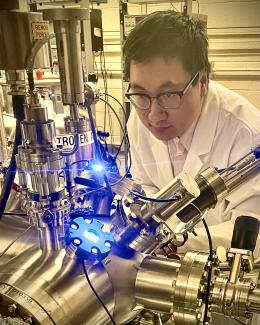Abstract
Realizing topological superconductivity by integrating high-transition-temperature (TC) superconductors with topological insulators can open new paths for quantum computing applications. Here, we report a new approach for increasing the superconducting transition temperature ("T" _"C" ^"onset" ) by interfacing the unconventional superconductor Fe(Te,Se) with the topological insulator Bi-Te system in the low-Se doping regime, near where superconductivity vanishes in the bulk. The critical finding is that the "T" _"C" ^"onset" of Fe(Te,Se) increases from nominally non-superconducting to as high as 12.5 K when Bi2Te3 is replaced with the topological phase Bi4Te3. Interfacing Fe(Te,Se) with Bi4Te3 is also found to be critical for stabilizing superconductivity in monolayer films where "T" _"C" ^"onset" can be as high as 6 K. Measurements of the electronic and crystalline structure of the Bi4Te3 layer reveal that a large electron transfer, epitaxial strain, and novel chemical reduction processes are critical factors for the enhancement of superconductivity. This novel route for enhancing TC in an important epitaxial system provides new insight on the nature of interfacial superconductivity and a platform to identify and utilize new electronic phases.






